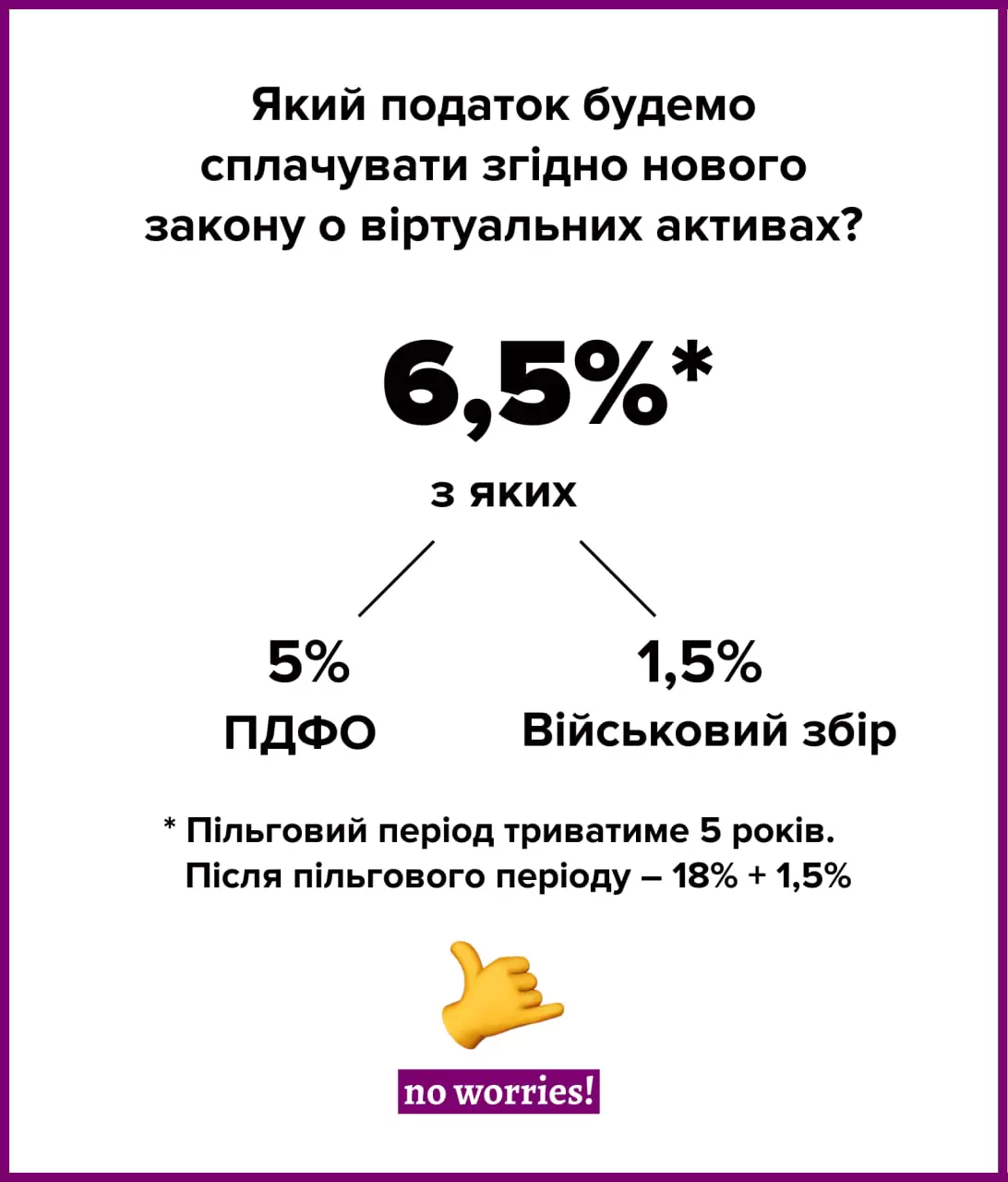Ukraine was rankedfourth in the Global Cryptocurrency Adoption Index for 2021. At the same time, until recently, crypto assets were neither banned nor allowed, meaning that their status was not regulated by law. on March 16, President Zelensky signed the draft law «On Virtual Assets». How did our country come to recognize crypto and what do crypto investors need to know about the government’s plans to regulate the market?
A brief timeline of events:
The first stage. on September 8, the Verkhovna Rada of Ukraine adopted the Law on Virtual Assets, which regulates the responsibilities of crypto exchanges and other service providers. On the positive side, the law was developed based on standards provided by the Financial Action Task Force on Money Laundering (FATF). It was first submitted to the Verkhovna Rada on June 11, 2020, but it was immediately criticized by regulators, after which it was revised several times, which, however, did not affect the President’s decision.
The second stage. on October 5, 2021, Volodymyr Zelenskyy did not sign the Law on Virtual Assets, sending it back for revision and suggesting that a new body to regulate the crypto industry not be created.
The third stage. on February 17, 2022, the Verkhovna Rada adopted the updated Law on Virtual Assets in the second reading, taking into account the President’s recommendations. What are the peculiarities of the law adopted by parliamentarians?
- No new regulator will be created
- The Ministry of Digital Transformation was removed from the list of existing regulators
- The crypto market will be regulated by the National Securities and Stock Market Commission (NSSMC) and the National Bank of Ukraine
The law signed by Zelenskyy will really come into effect when the Tax Code of Ukraine is amended. The final version of the document already outlines specific changes to be made to tax legislation. Most of them relate to general wording: what are virtual assets, the system of virtual asset turnover, types of virtual assets, etc. Let’s analyze the main points in more detail.
What does the law «On Virtual Assets» describe and how does it regulate the cryptocurrency market?
Wording. First of all, the law introduces the concept of virtual assets into the legal field — it is an intangible good that is an object of civil relations, has value and exists in electronic form.
A virtual asset can be either an independent object of civil turnover (i.e. bitcoin, ether and any other unsecured cryptocurrency) or a virtual expression of another asset (stablecoin, tokenized security, etc.). Thus, the law protects both holders of the main crypto coins and fans of usdt, XRP and the like.
The law defines a «financial virtual asset» (FVA). It is divided into two types:
- FVAs backed by currency values (stablecoins)
- FVAs backed by securities or derivatives (tokenized securities)
Bitcoin is not a means of payment, but it can be used to pay. Virtual assets are not equated to legal tender in Ukraine. You will not be able to come to a store and pay for goods by direct transfer of bitcoin or any other virtual asset. An example of the opposite situation is El Salvador, where the buyer can transfer bitcoin to the seller and the seller has no right to refuse this type of payment. In El Salvador, bitcoin is a legal tender, while in Ukraine, the only such tender is still the hryvnia.
But this does not mean that it will be impossible to pay with cryptocurrency. Thanks to the availability of acquiring in Ukraine, the buyer can pay for the purchase with a card in any desired currency (including crypto), and the seller’s account will receive the hryvnia directly through instant conversion.
Legal protection of cryptocurrency owners. Any market participants, from buyers to service providers, will receive full legal protection provided by the laws of Ukraine, including the Law on Personal Data Protection. Ukrainians will also be able to declare income from their virtual assets.
Companies will not need a separate registration or license, but they will need a permit. The law «On Virtual Assets» separately regulates the work of service providers, which include companies engaged in such activities:
- Store and manage virtual assets and private keys
- Exchange virtual assets
- Transfer virtual assets
- Provide other intermediary services with virtual assets
- All service providers will be able to register on the territory of Ukraine, except for legal entities from those countries recognized by the Verkhovna Rada of Ukraine as an occupying or aggressor state. Currently, only one country has this status — the Russian Federation
Service providers will not need to register to operate, but will need to obtain a special permit. The cost of the permit depends on the services the company intends to provide and whether the applicant is a resident of Ukraine. Prices range from 4000 to 20 000 tax-free minimum incomes. The size of the authorized capital varies from 35,000 to 350,000 tax-free minimum incomes.
Service providers must comply with KYC/AML rules (of course, how else can the regulator catch and punish Russians in the crypto environment?) That is, it is impossible to work without customer identification. Such requirements are set by the FATF and are mandatory not only in our country but also wherever crypto assets are legalized.
Mining will not be regulated — the authorities consider cryptocurrency mining to be an absolutely legal activity that does not need to be further defined and regulated. At the same time, miners still received legal protection. Previously, there was no definition of cryptocurrencies in Ukraine, meaning that from a legal point of view, it was unclear what equipment miners used and what they were doing. Now, it is possible to officially declare that a person or company is mining cryptocurrency. There are two requirements for legality: importing only registered equipment into the country and paying for electricity.
ICO/IGO/IEO regulation will be detailed later. At this stage, in the case of a public offering of virtual assets, it is necessary to prepare and publish information that includes:
- Name of the person making the public offering
- Website address of the person making the public offering
- General information about the virtual assets to be purchased
- Terms of purchase of virtual assets
- Terms of collection of virtual assets
- Terms of withdrawal of virtual assets from circulation
- Risks associated with the purchase of virtual assets
All things considered, regulations on ICOs, IEOs and other mechanisms for attracting investments through the sale of tokens are still being developed, as no clear wording has been found in the law.
Taxation. The law «On Virtual Assets» contains basic definitions and concepts related to the taxation of cryptocurrency transactions, but no specific aspects are specified. It will be used as a basis for other regulations.
onMarch 13 , theDraft Law «On Amendments to the Tax Code of Ukraine on Taxation of Transactions with Virtual Assets»was registered .
Its main points are as follows:
- Exemption from VAT on transactions with virtual assets and services provided by service providers related to virtual assets
- Establishment (for a period of 5 years) of preferential taxation of investment income from transactions with virtual assets and services provided by service providers related to virtual assets at a 5% income tax rate
- Establishment (for a period of 5 years) of preferential taxation of investment income from transactions with virtual assets for individuals at a personal income tax rate of 5%
- Establishment of the obligation to pay military duty on the amount of investment income from transactions with virtual assets for individuals at the rate of 1.5%
What does the Law on Virtual Assets bring to Ukraine?
First of all, the banking system will be boosted. The banking sector will develop by adding new functions that were previously unavailable to Ukrainians. For example, banks will be able to open accounts in stablecoins or cryptocurrencies. Acquiring will also allow people not only to keep cryptocurrencies in their bank accounts but also to pay with them. Earlier, Monobank co-founder Oleg Gorokhovsky said that the bitcoin card is ready and is awaiting NBU approval. And the National Bank will be able to give it, as the legal framework finally allows it
The new law will also provide a basis for further regulations — the legislative level now includes provisions on what cryptocurrencies are and how crypto exchanges should work, etc. The Minister of Digital Transformation Mykhailo Fedorov spoke in detail about this on his Telegram channel:
Kyrylo Shevchenko, Governor of the National Bank of Ukraine, agrees with Mr. Fedorov:
Conclusion
The Law on Virtual Assets has an explanatory purpose, but at the same time lays all the necessary foundations for further market growth. It describes the main concepts:
- What are virtual assets?
- Why virtual assets are intangible
- Secured (stablecoins, tokenized shares) and unsecured (BTC, ETH, LTC, etc.) virtual assets
- What moment is considered the creation of a virtual asset
- Who is a service provider
- What are the requirements for service providers
- Who regulates service providers
Based on the law «On Virtual Assets», various regulators have already begun to develop various bylaws that will more precisely regulate the work of all entities. For example:
- Amendments to the Tax Code
- Instructions for opening accounts in virtual assets
- Procedure for attracting investments through ICO
- Accounting issues in the field of cryptocurrency mining
- And many other bylaws
In the meantime, we are looking forward to the adoption of amendments to the Tax Code and follow the legalization of the crypto market. Stay tuned!



